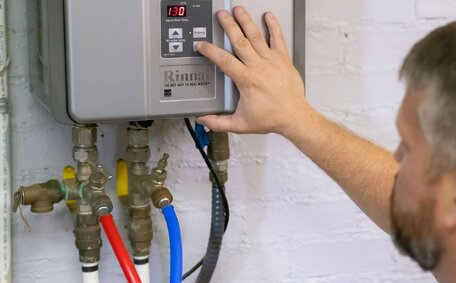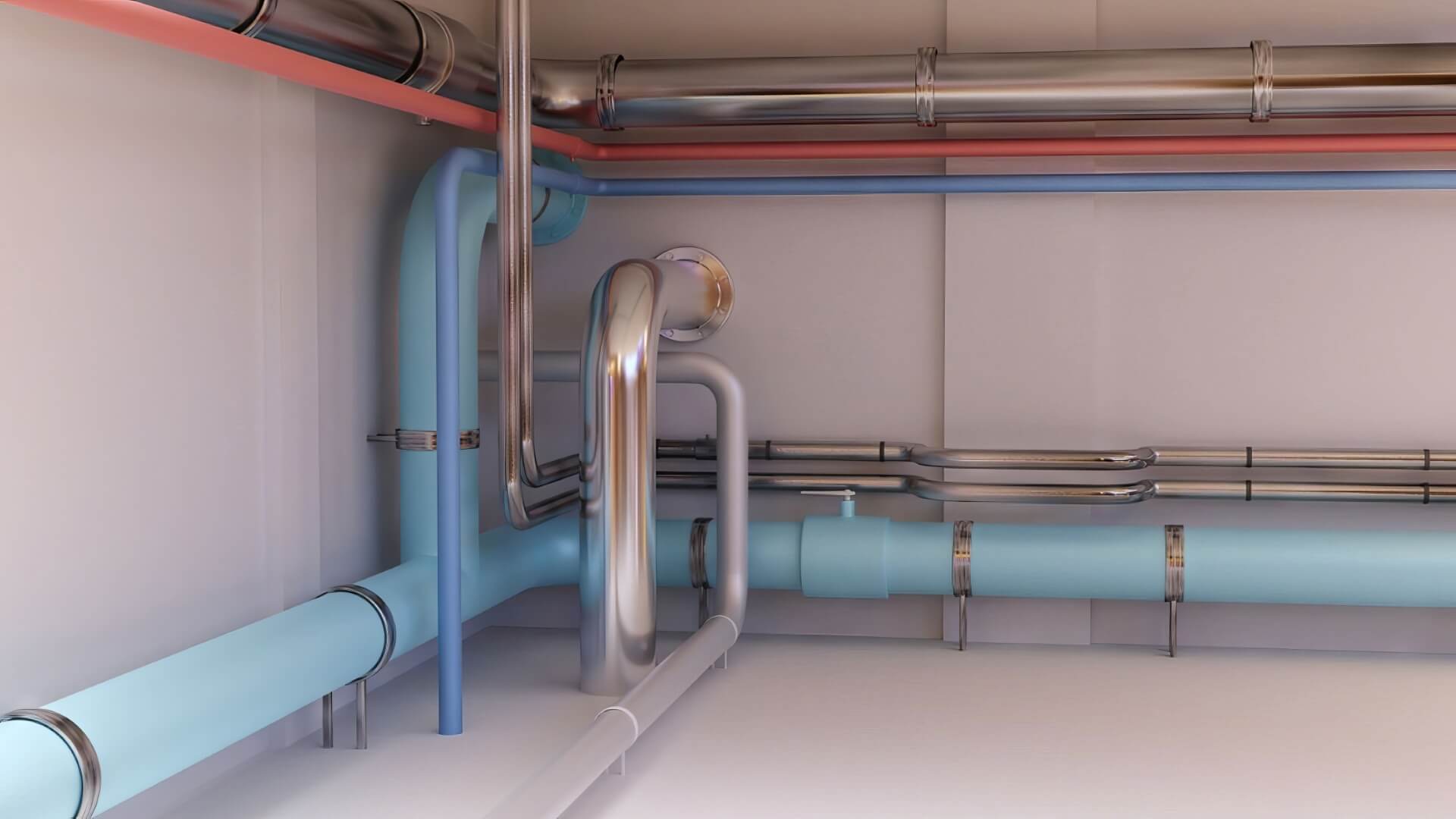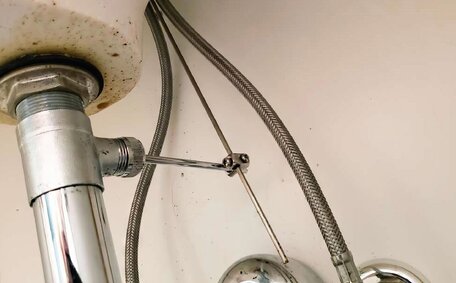Assessing the Water Leak and Extent of Mold Growth
Inspect all potential leak origins soon possible to address excess moisture or mould indications efficiently.
Be vigilant for common causes of mould, such as under sinks, behind appliances, and within wall cavities. Look for visible water damage, mould growth or musty smells, which can indicate a hidden leak. Look for visible water damage, mould growth or musty smells, which can indicate a hidden leak.
Investigate your walls and corners for some common mould varieties in your house, such as black mould, as well as others which may appear powdery or fuzzy. Use a moisture metre to test materials as part of a comprehensive mould cleaning strategy, As mould grow it requires sufficient moisture in hidden crevices to flourish.
Document all affected areas with photos and notes to monitor spread over time. Document all affected areas with photos and notes to monitor spread over time.
Our experts recommend these steps when mould can be linked to a water leak:
- Stop the water source immediately.
- Remove any water standing, which can hold potential for mould increase, with towels and a wet/dry vacuum.
- Following a flood, promptly clean up the area as comprehensively as possible using fans and dehumidifiers.
- After floodwaters subside, act rapidly to eradicate mould mildew, and dispose of damp porous materials such as plant and animal fibres, including items like clothing and shoes.
- Clean hard surfaces with detergents or vinegar solutions.
- Monitor the intersection of moisture air surface humidity, as effectively managing these can hinder mold proliferation.
Visit our website to discover a wealth of solutions if you encounter mould growing in your home extending over an extensive area. Our licenced technicians have advanced equipment to test moisture levels and safely remove contaminated materials, ensuring most types mould your home encounters are thoroughly addressed.
Health Risks of Mold Exposure
Exposure to any spores of mould how they might endanger your wellbeing by proliferating in your home, poses considerable health challenges. Mold can cause various health effects, including irritation and inflammation, particularly in individuals with asthma or allergies. Symptoms may include sneezing, runny nose, red eyes, coughing, sore throat, headaches, fatigue and skin rashes.
Prolonged exposure to what mould can do poses risks potentially leading to more chronic conditions like lung infections, hypersensitivity pneumonitis, and problems with memory and focus. Rarely, certain moulds like Aspergillus can cause health issues such as serious infections in people with weakened immune systems. There is also some evidence linking mould to depression and anxiety.
The young, elderly, and some people with pre-existing respiratory conditions are particularly at risk and need extra consideration. Even minor instances of mould growing in your abode necessitate fast action before contamination proliferates, endangering your health. Uncover strategies on how prevent mould from settling in; these include ensuring good ventilation, controlling moisture, and upholding quality indoor air within your living spaces.
If you are concerned about potential mould-related illness, consult your doctor. Be sure to also contact a professional mould inspector to identify contaminated areas, assess your exposure levels, and outline safe and compliant remediation steps specific to your situation.
Immediate Cleaning Steps After Discovering a Leak
Acting swiftly, which can take the form of immediate action when there sufficient evidence of a water leak, is crucial to halting the spread of mould. Adopt these principal actions to how get rid of mould effectively:
- Instantly stop the water source to stop mould in its tracks by switching off main valves or powering down impacted devices.
- Remove excess water with towels and a wet/dry vacuum cleaner. Lift up wet carpets and padding, which moisture from outside can affect, to access the floor inside your property.
- Increase circulation within your property; this allows air outside can to alter the indoor climate, making it tougher for mould to flourish. Turn on fans or portable dehumidifiers to actively dry out the area and reduce moist air.
- Discard porous materials like ceiling tiles, drywall, carpet or furniture padding that remain damp after 72 hours of drying efforts.
- Thoroughly clean all hard, non-porous surfaces such as tiles with a detergent solution or vinegar to remove residual mould and prevent regrowth. Employ protective gear to get rid mould safely during the cleaning process.
- Monitor humidity levels with a hygrometer to keep your indoor air under 50 percent relative humidity until materials are completely dry to prevent hidden mould issues.
For extensive water damage beyond DIY efforts, enlist Glenwood Plumbing’s professional service product treatment options, such as assessment and remediation, to properly dry out your property and ensure your living space is mould hazard free.
How to Remove Mold Safely
When attempting do-it-yourself mould removal, safety should be the top priority. Make sure to wear protective equipment like gloves, goggles and an N95 respirator mask. Facilitate airflow in your home through open windows, vents heating air systems, and fans to ensure ample ventilation.
Always apply cleaning agents crafted for tackling mould in poorly ventilated spaces. Keep in mind not to mix cleaning chemicals that could emit hazardous gases.
For smaller patches on non-porous surfaces like tile, try natural remedies like tea tree oil first to decide what to do when removing mould. Spray affected areas, let sit 10 minutes then scrub and rinse away.
On materials prone to absorbing moisture, like certain building materials, mould tends to penetrate deeply, necessitating complete replacement. Cut out visibly affected sections plus extra around the edges. Bag and dispose of contaminated materials properly.
If you have health concerns or mould growth exceeds 10 square feet, do not attempt removal yourself; instead, seek assistance from a licensed mold professional. Our licenced technicians ensure all mold your home encounters is addressed, using commercial-grade equipment for safe, compliant removal.
Preventing Future Leaks and Mold Growth
Understanding how to stop mould growing by moulding your approach to eradicate it effectively is a durable plan to sidestep recurring leaks and mould quandaries. This involves maintaining your home’s structural integrity through regular inspections and repairs:
- Inspect the exterior of your home, checking roofs and walls including blocked sections and gutters, for any cracks annually. Repair any damage immediately to prevent conditions that cause mould.
- Guarantee adequate drainage by checking gutters downpipes around the home’s perimeter to prevent water from building up.
- Be vigilant for leaky plumbing under sinks and appliances; replacing worn components can avert mould challenges.
- Use exhaust fans, which can help keep humidity below 50% to prevent mould, especially in wet rooms.
- Consider moisture sensors or an air conditioner with leak detection systems to alert you of excess water.
- Implement measures that prevent spores from entering your living areas by enhancing airflow and climate control using air conditioning systems. Dehumidifiers can also help maintain optimal humidity levels.
- During heavy rain, consider measures like storm shutters, sandbags, and ensuring your heating air conditioning systems have covered vents.
For professional assistance inspecting your home or rental property, or fixing any persistent moisture issues uncovered, please contact Glenwood Plumbing. Shielding your family’s wellness from risks such as rising dampness and mould infestation is our paramount concern.
When to Call a Professional Plumber or Mold Remediation Service
Seeking professional help for plumbing leaks or mould in your home is advisable when:
- You discover a major leak causing flooding or water damage.
- Mould expansion exceeds 10 square feet in areas where it spans through multiple rooms and other segments of your home.
- Structural elements of your dwelling, walls including impacted areas, may suffer from mould contamination.
- DIY cleaning attempts over several days fail to resolve the mould problem.
- Sensitive individuals are experiencing potential mould-related health issues.
Glenwood Plumbing’s licenced technicians have advanced equipment to detect hidden leaks and unsafe mould growth. We can conduct proper remediation meeting Department Health standards, completely drying out your home and restoring it to a safe, mould-free state.
To arrange an inspection or discuss your specific leak or mould issues, please contact Glenwood Plumbing today via phone at 1300 349 338 or email [email protected]. Our experienced team is your local solution, serving the Glenwood area and all Sydney suburbs.
Understanding how to tackle damp mould challenges, such as a water leak or signs of mould, can alleviate worries. Unmonitored, the combination of mould damp conditions and surplus humidity can allow mould colonies to swiftly establish, posing threats to both health and structural integrity.
This article provides practical guidance on what you need know about tackling mould issues stemming from plumbing leaks or water ingress. We outline key actions to take immediately after finding a leak, discuss common mould types you may encounter, and detail safe cleaning methods for effective mould removal.
With an emphasis on moisture management and mould deterrence, we provide professional guidance, including maintaining seals around doors windows, to diminish leaks over time. Additionally, we cover when professional assistance is advisable for major mould or water damage situations.
Follow these best practises to get rid of mould issues promptly. Safeguard your family’s health and home by stopping moisture sources that could result in mould growth due to enabling conditions right away.
Conclusion
In summary, acting promptly when discovering leaks or mould growth is crucial to prevent further water damage and potential health issues. Monitor affected areas, control moisture levels under 50% humidity for environmental health, and thoroughly clean or replace porous materials as needed.
For those who have experienced mould contamination, explore beyond DIY techniques and consider professional remediation that adheres to NSW health standards. Glenwood Plumbing, among many other services, offers compliant mould testing and remediation to fully assure your home’s safety.
To discuss your specific leak or mould situation, please contact our licenced technicians today at 1300 349 338 or [email protected]. With advanced moisture detection equipment and decades of plumbing expertise, we are ready to assist with all your leak troubleshooting, mould removal and prevention needs.






